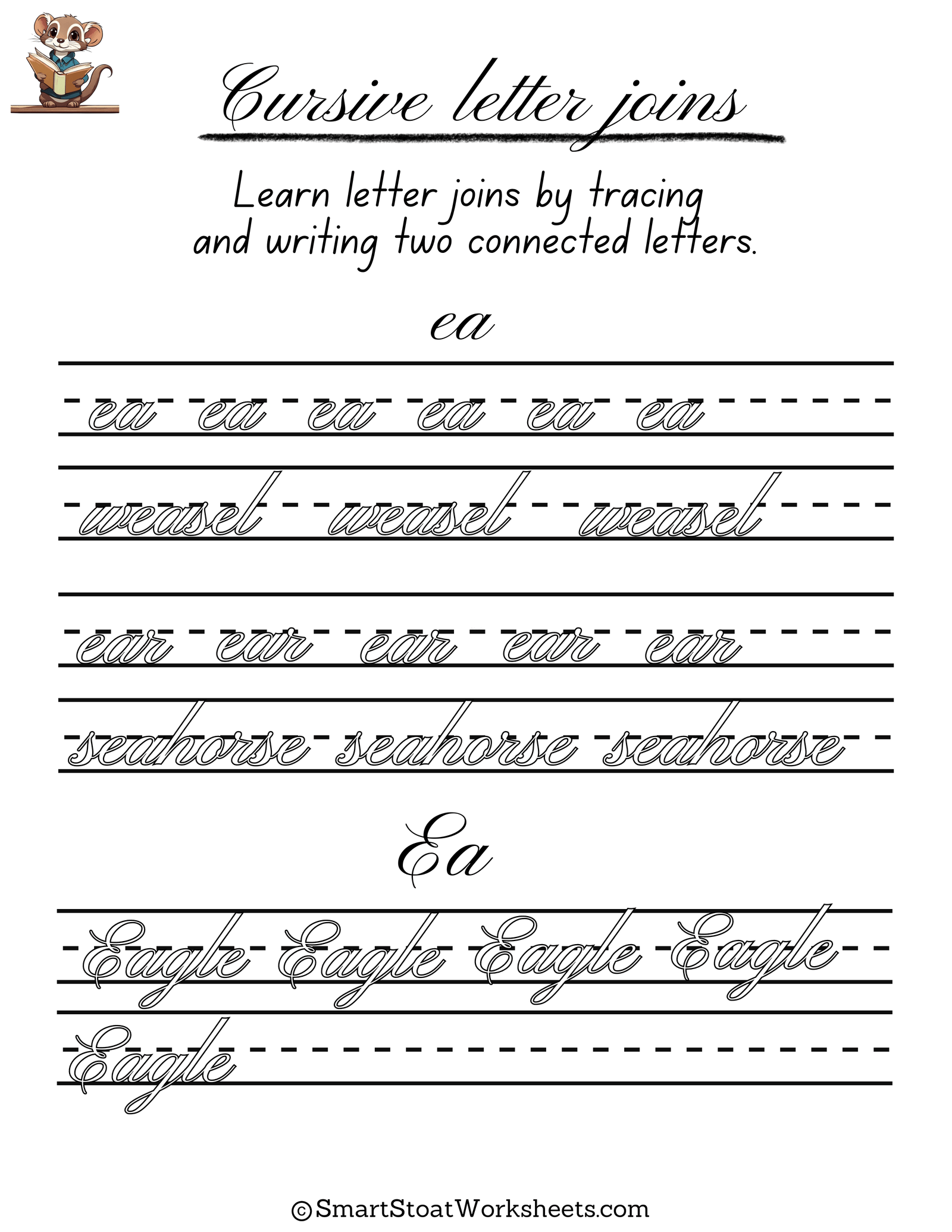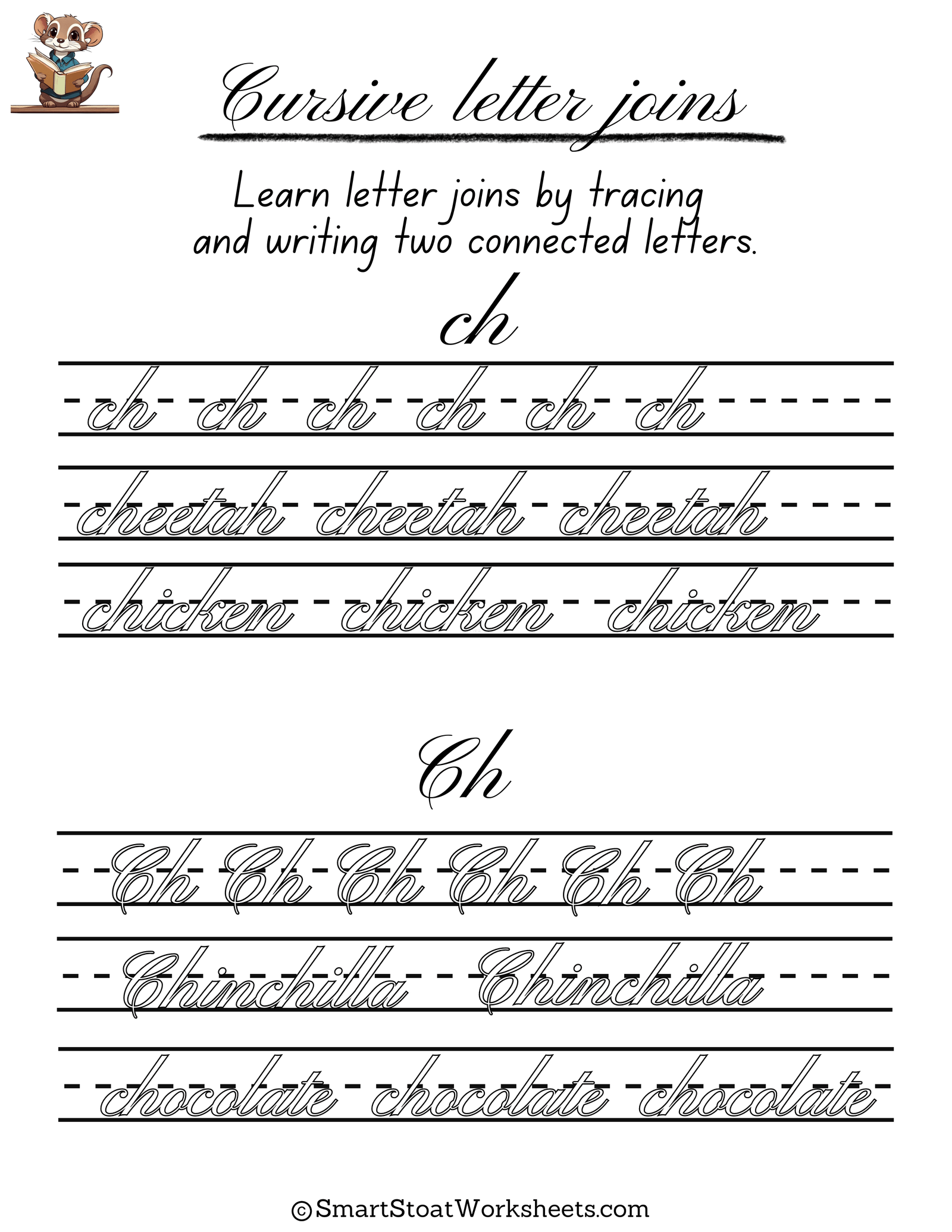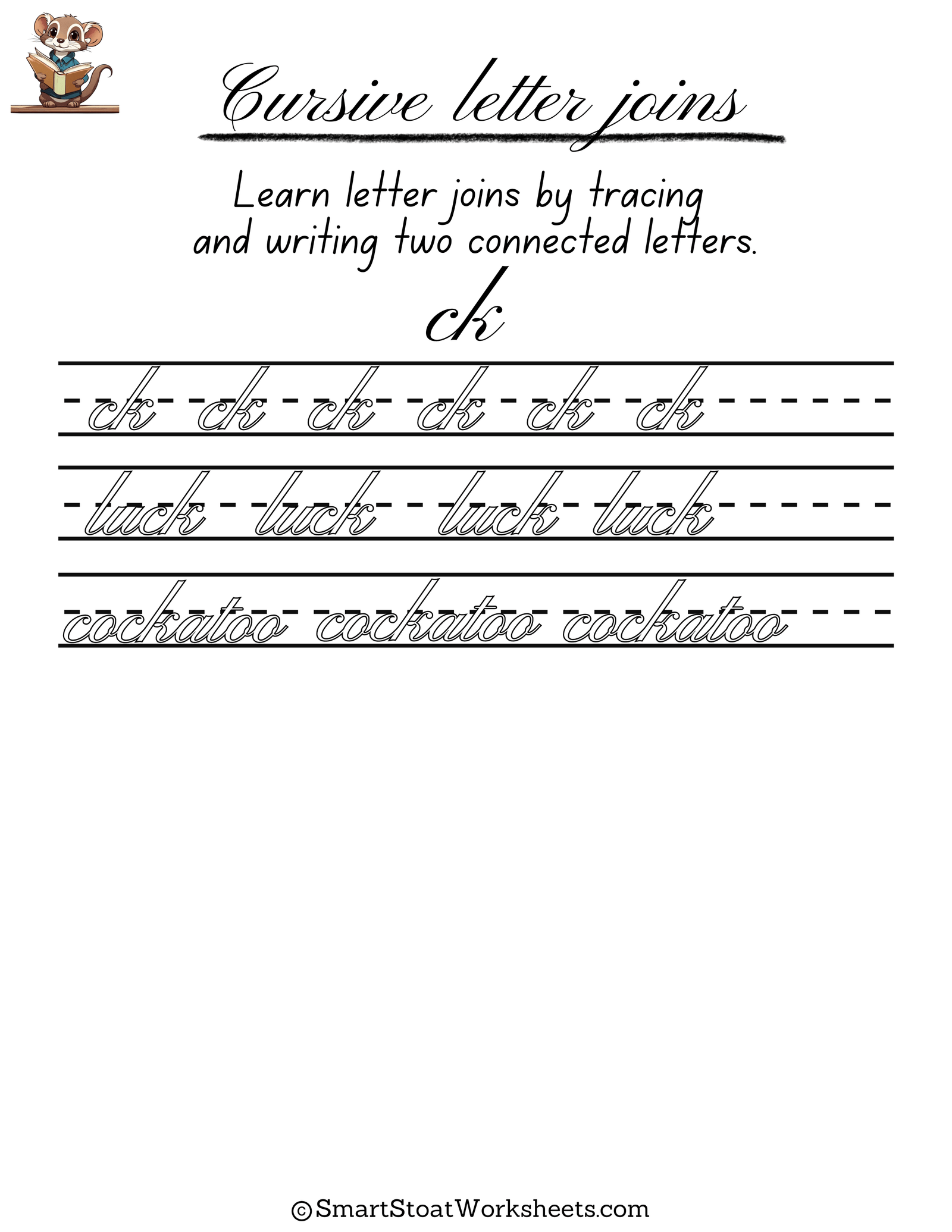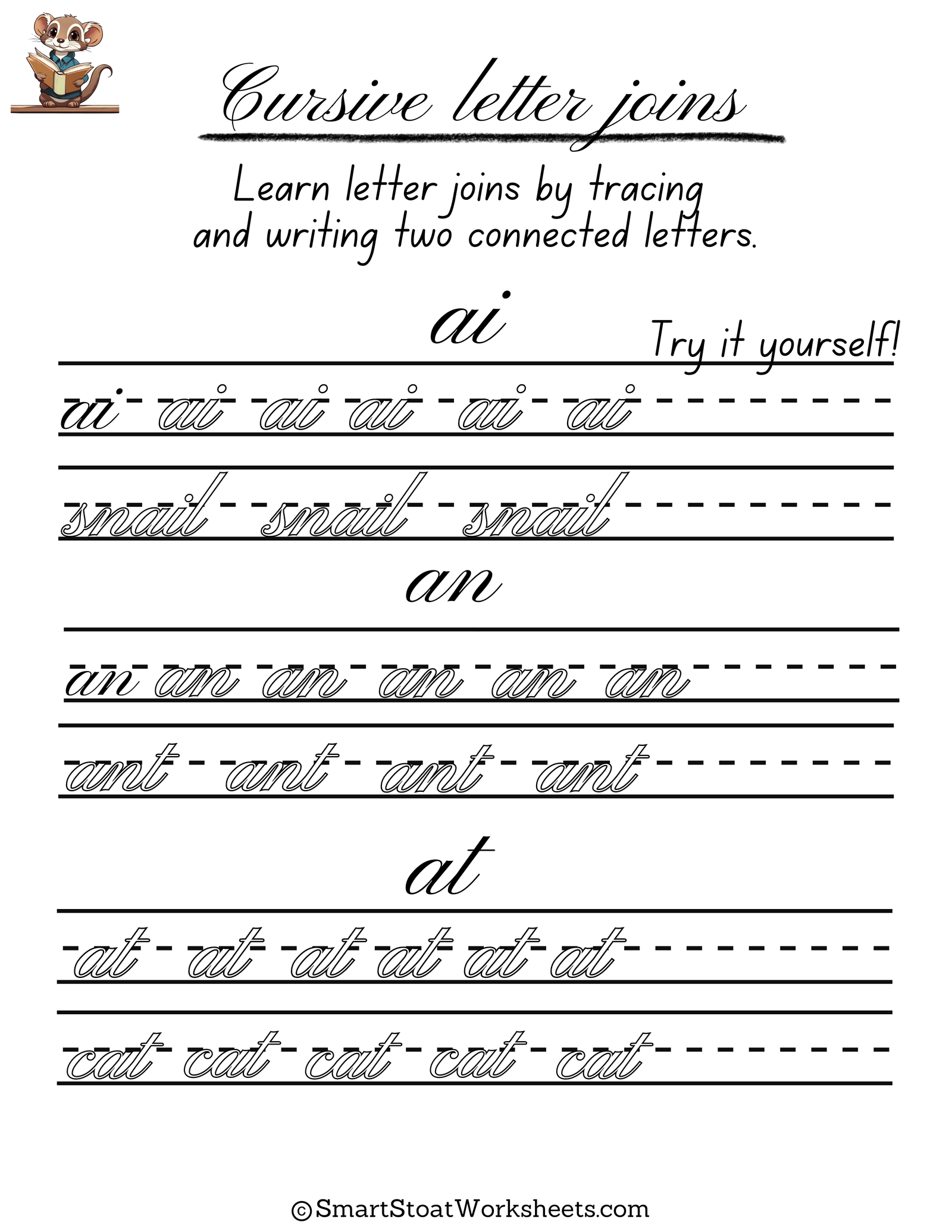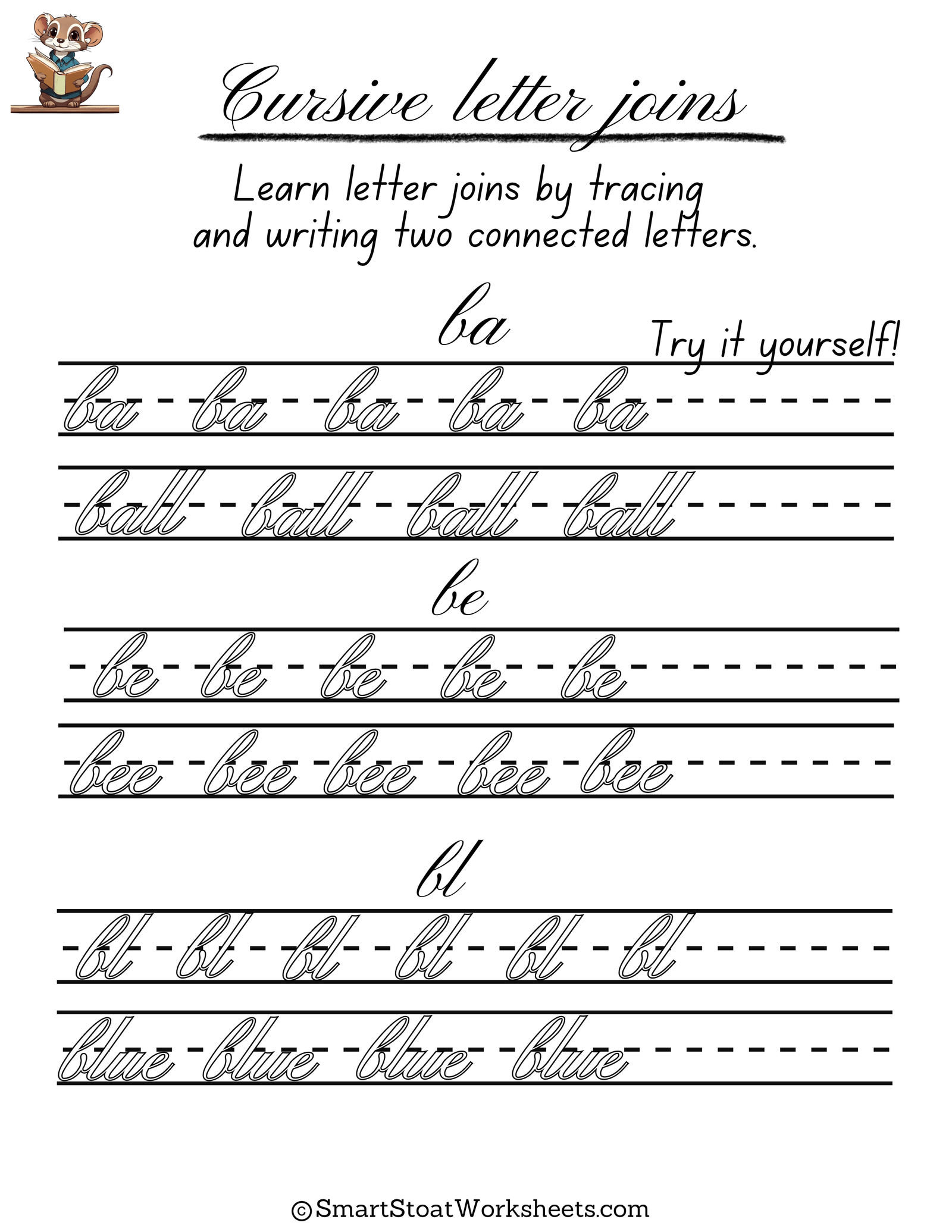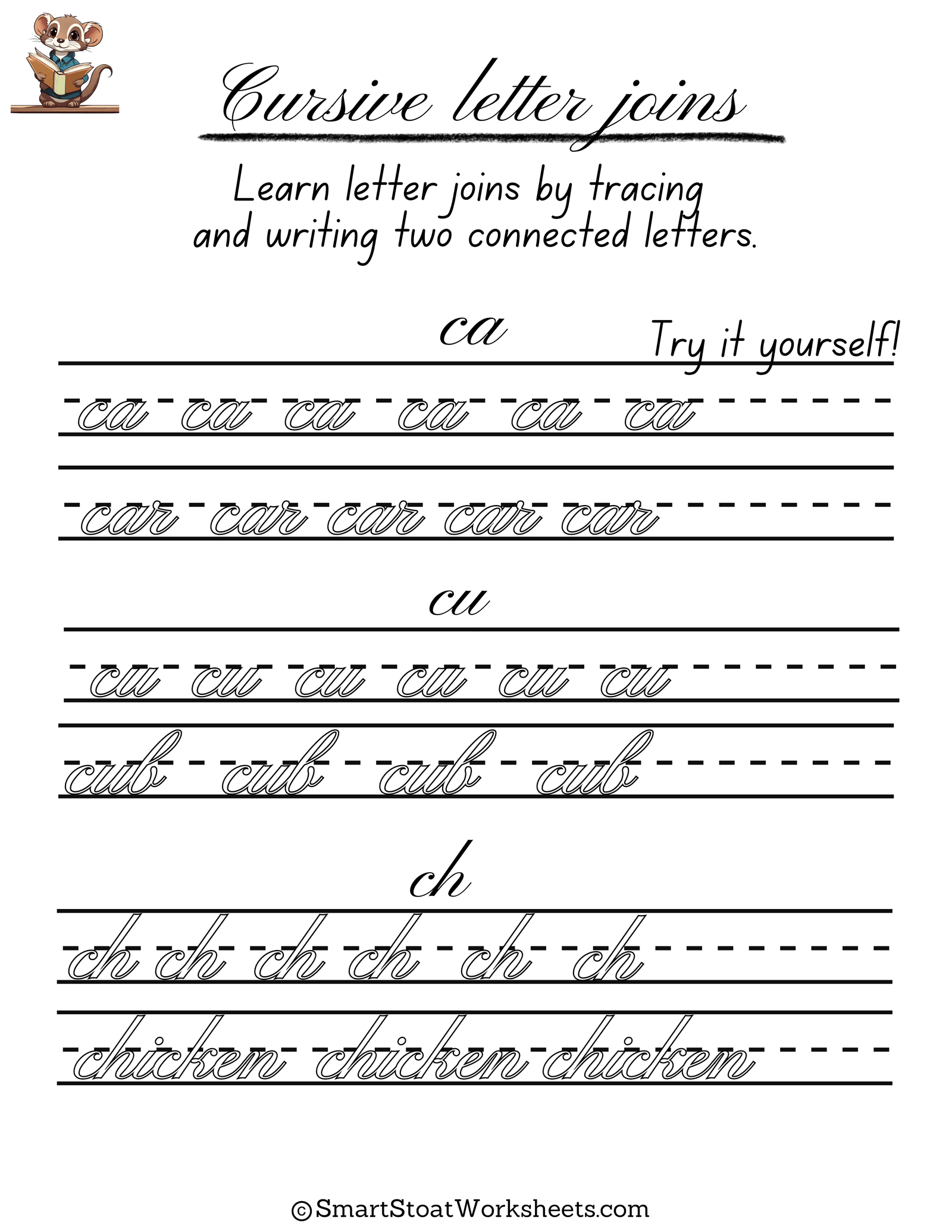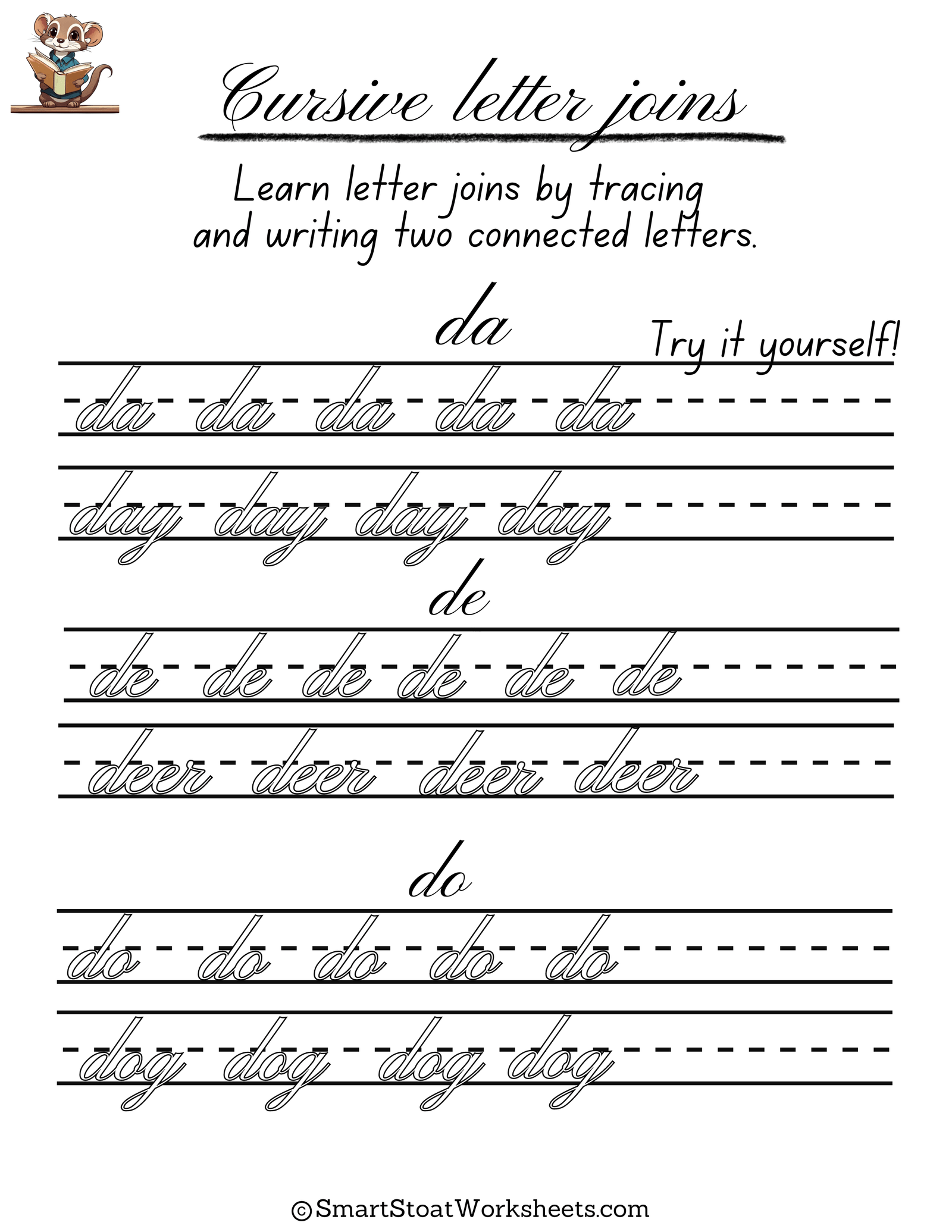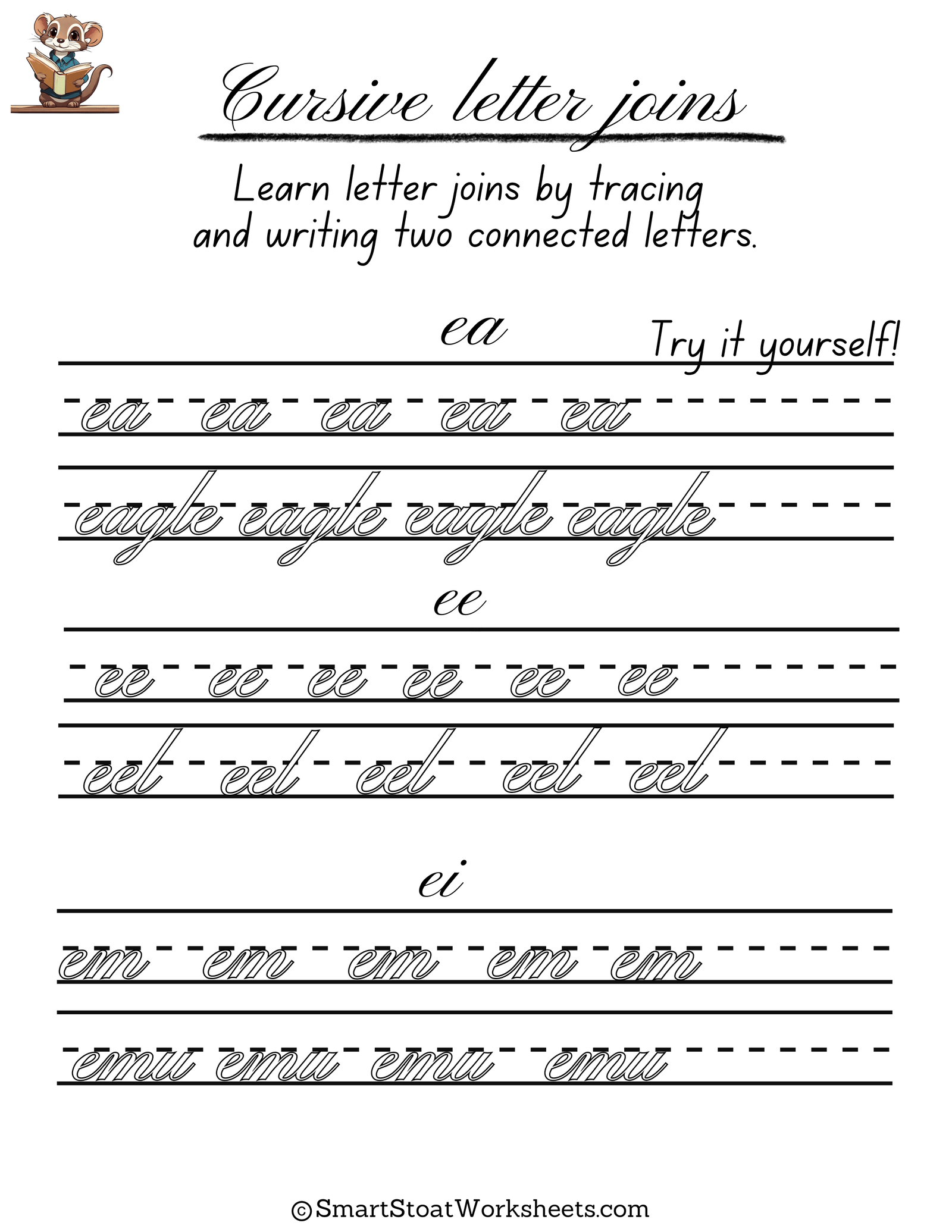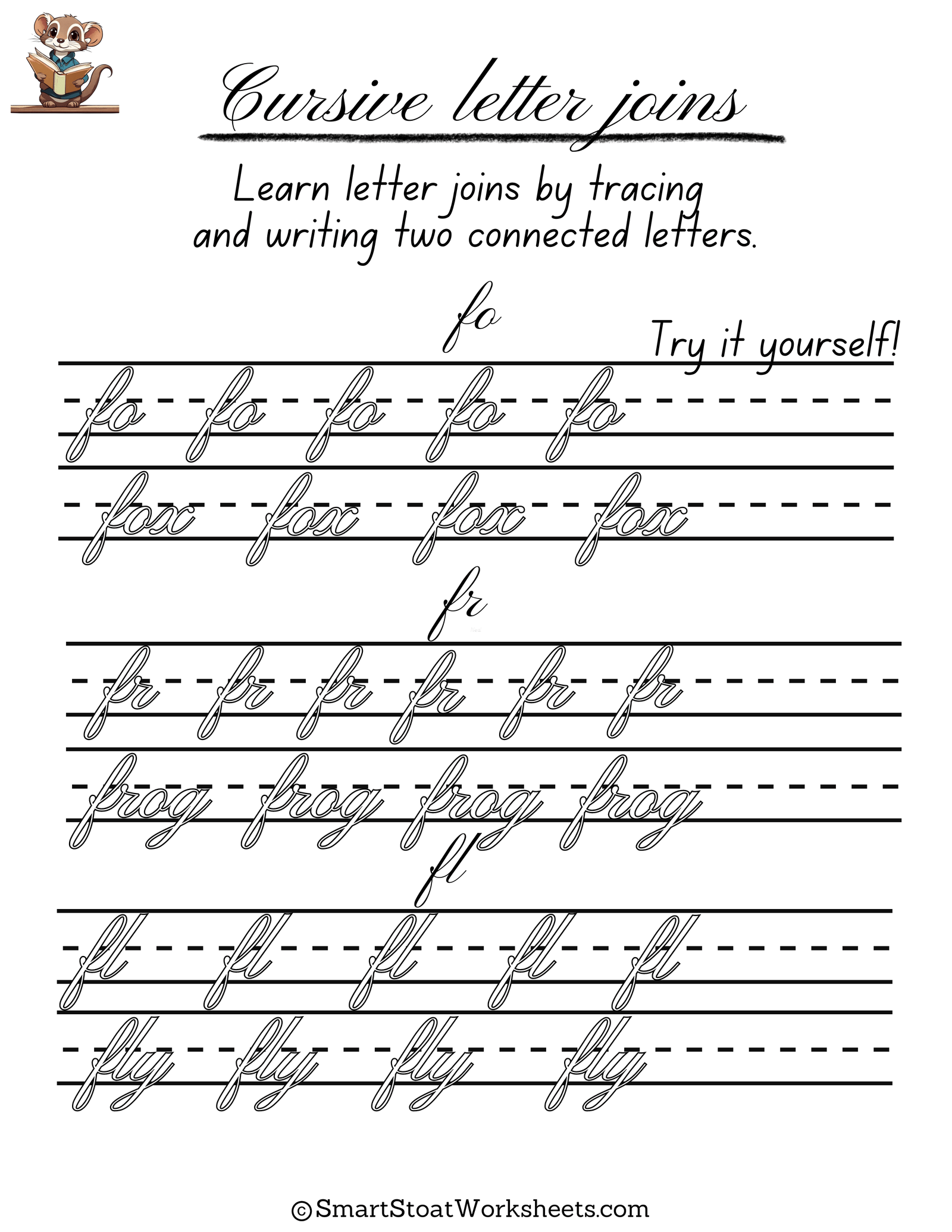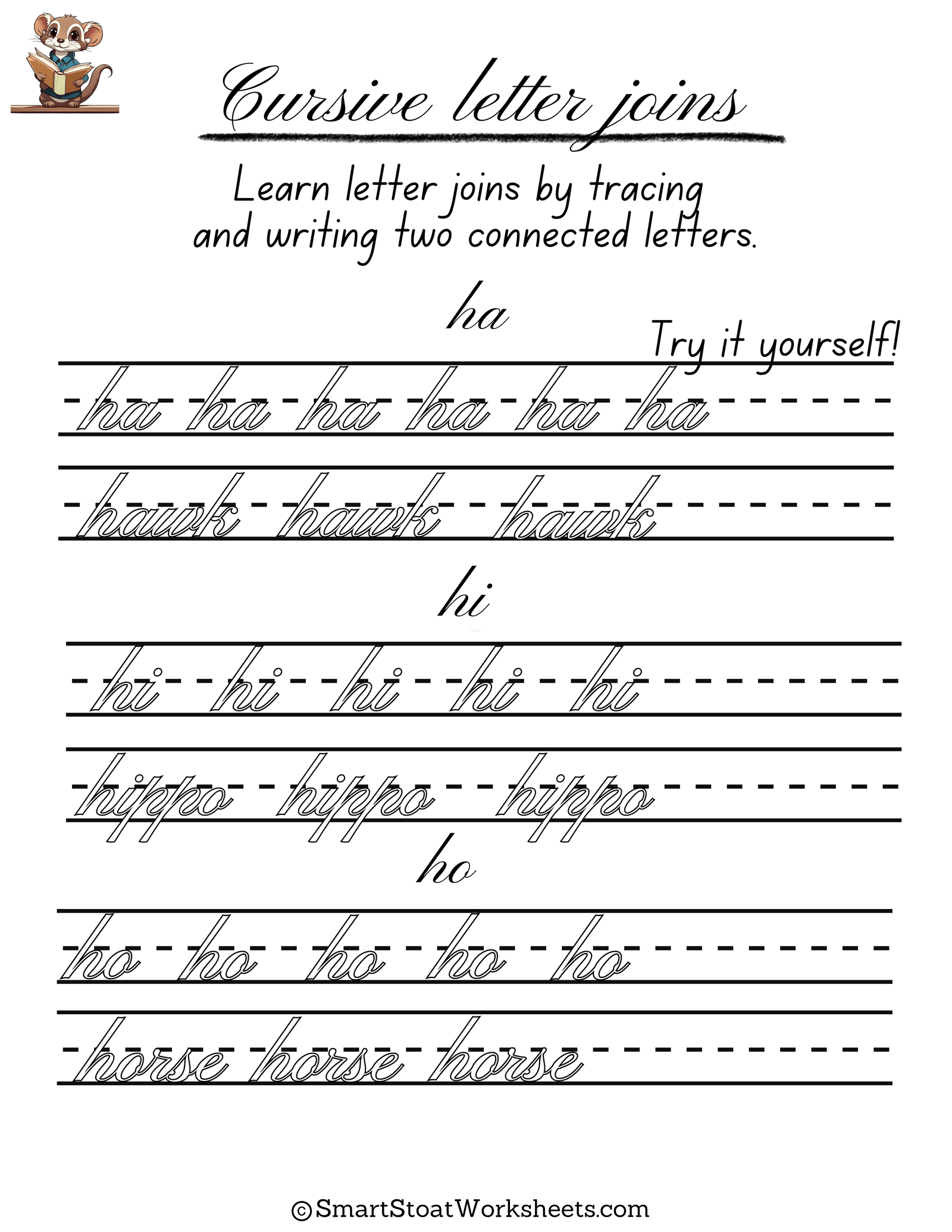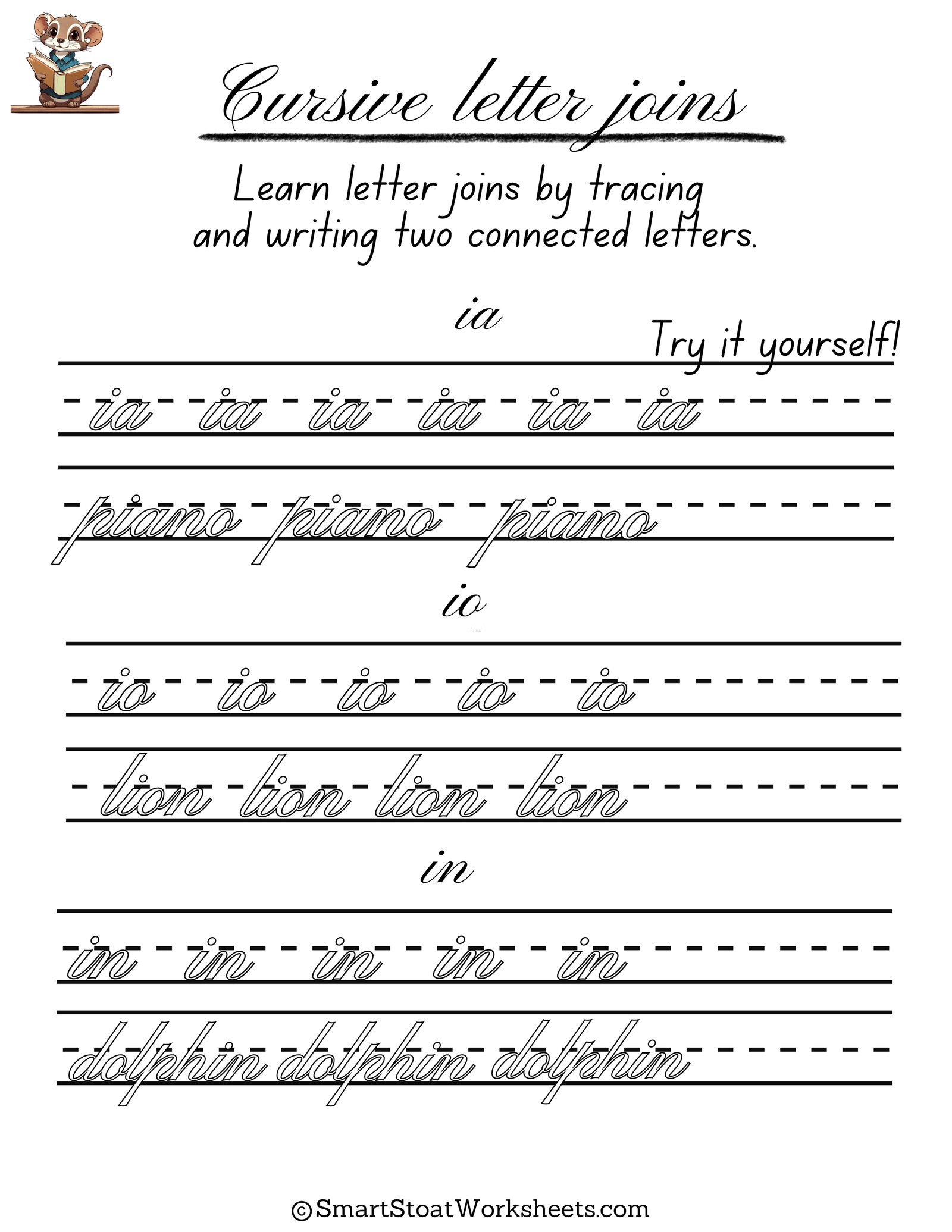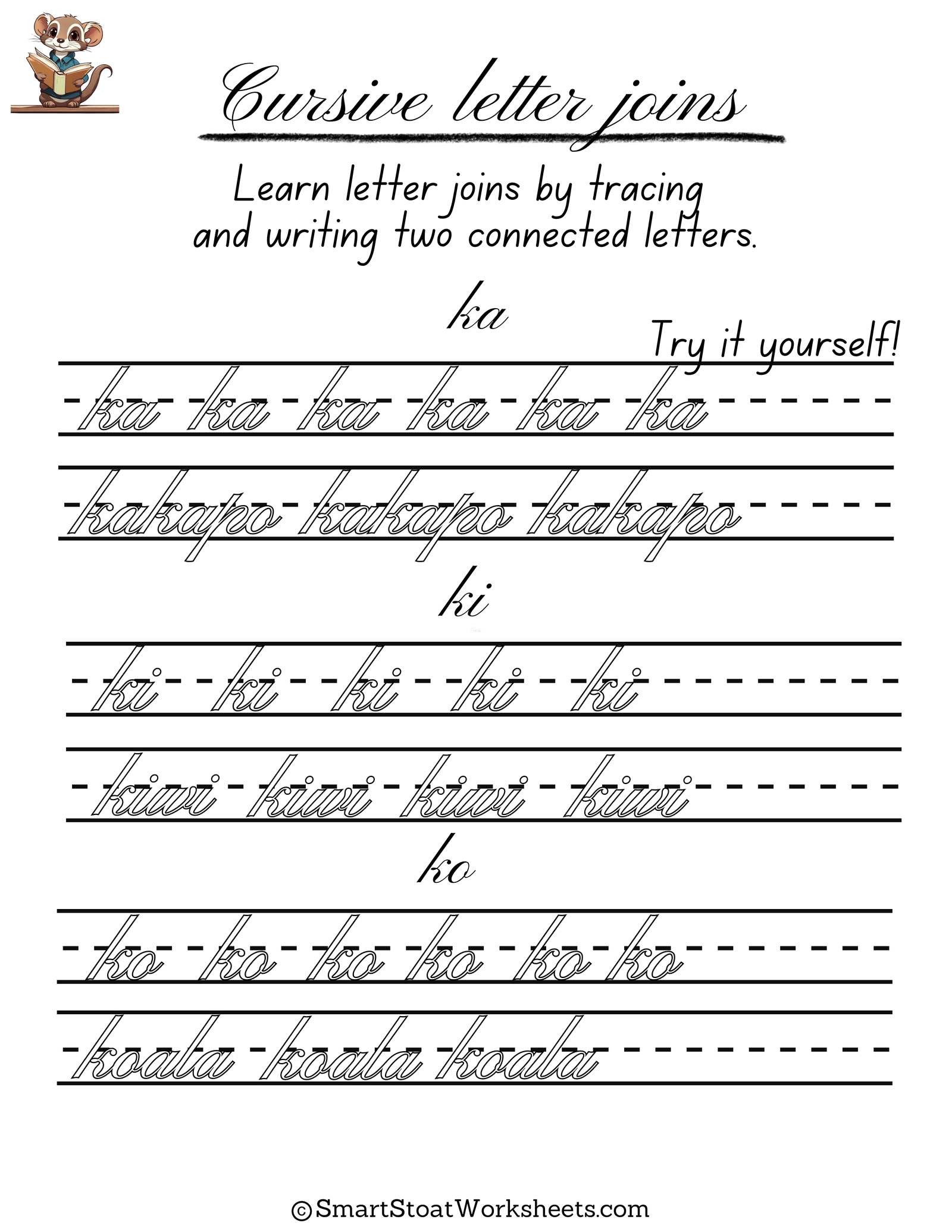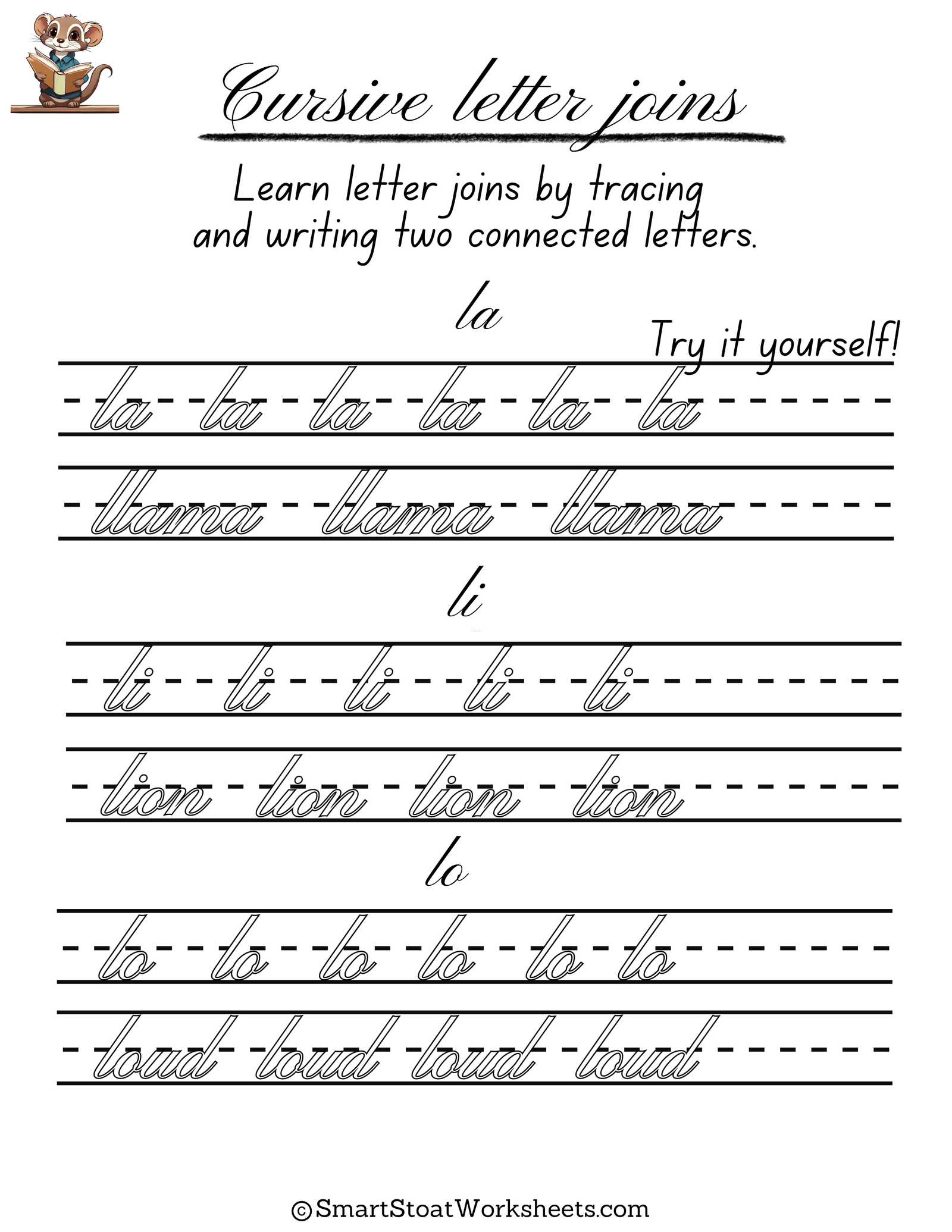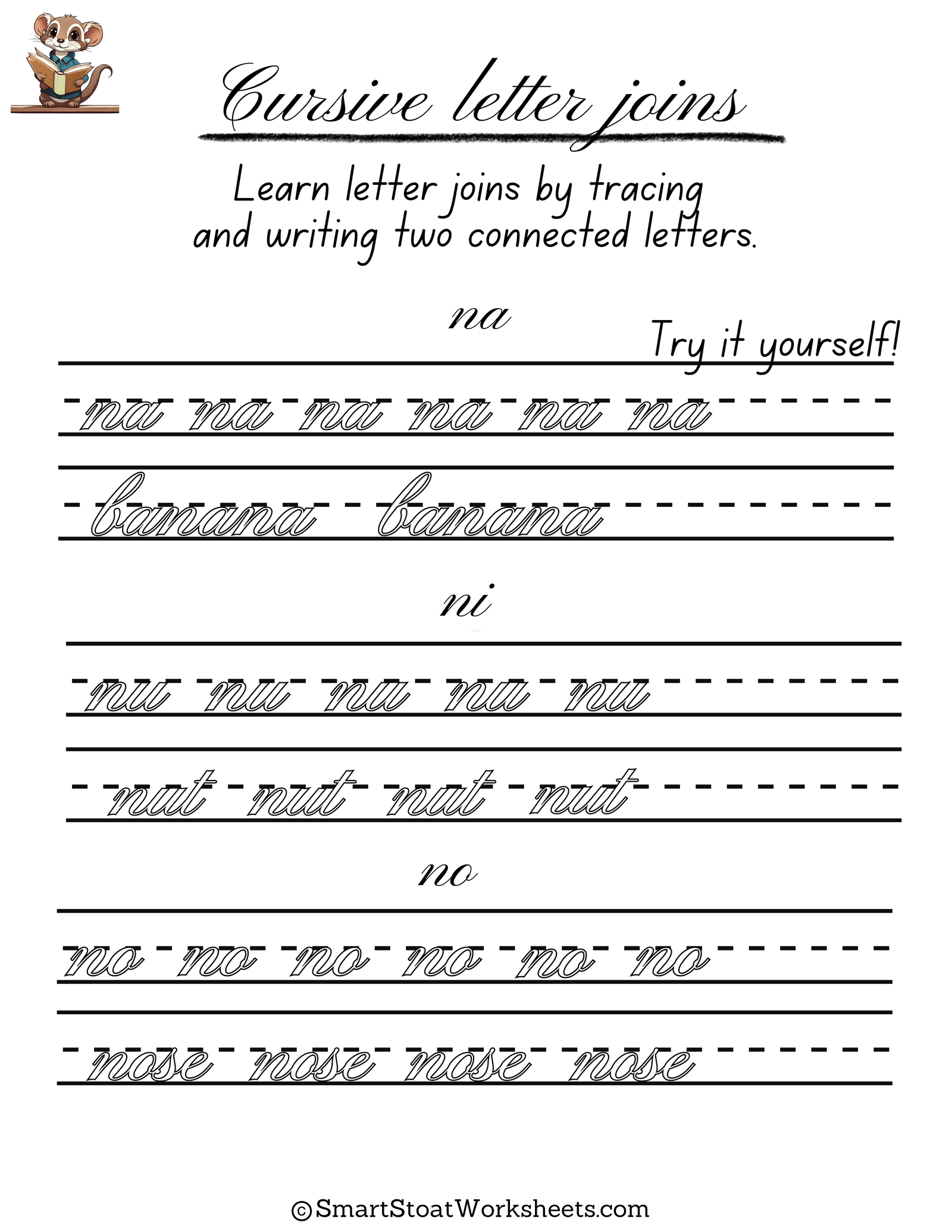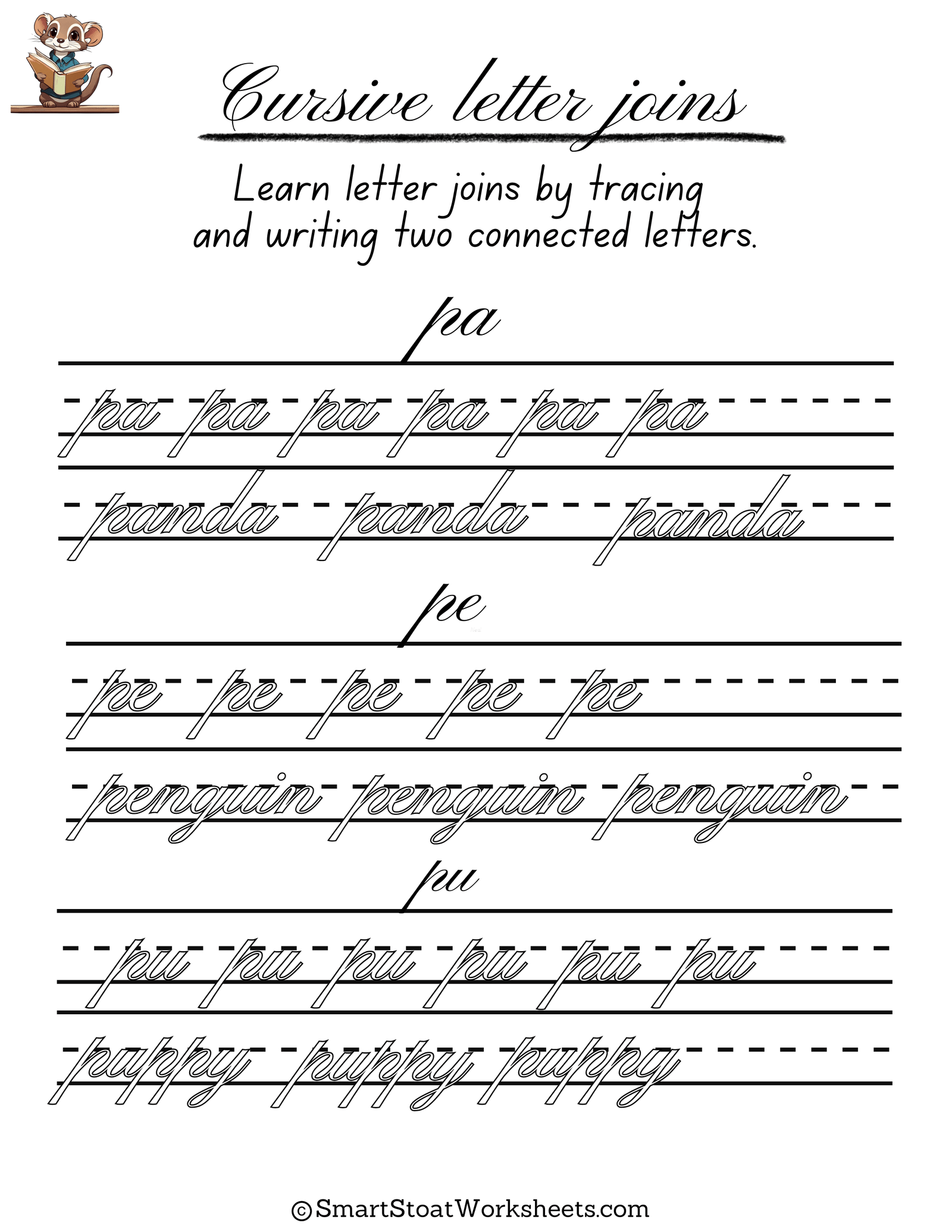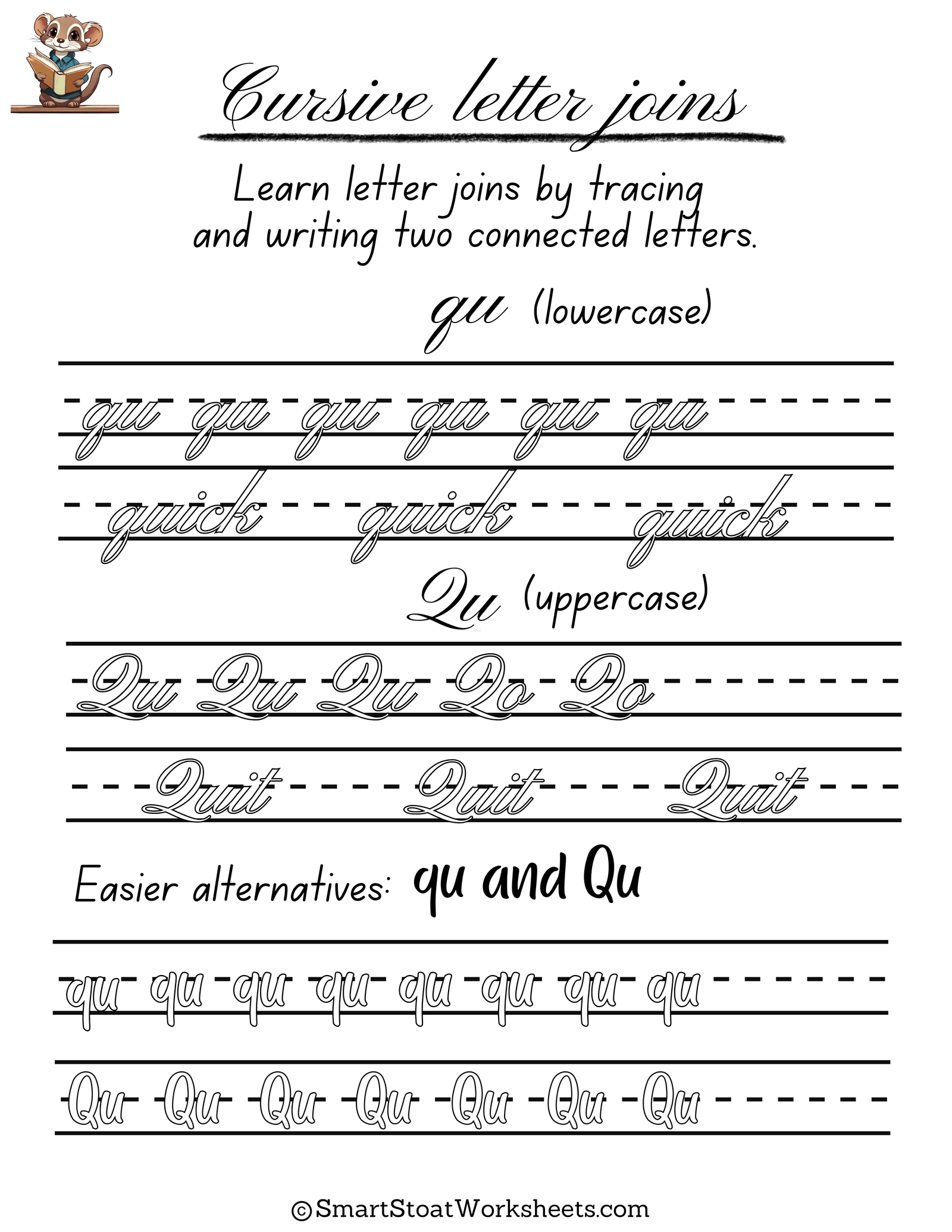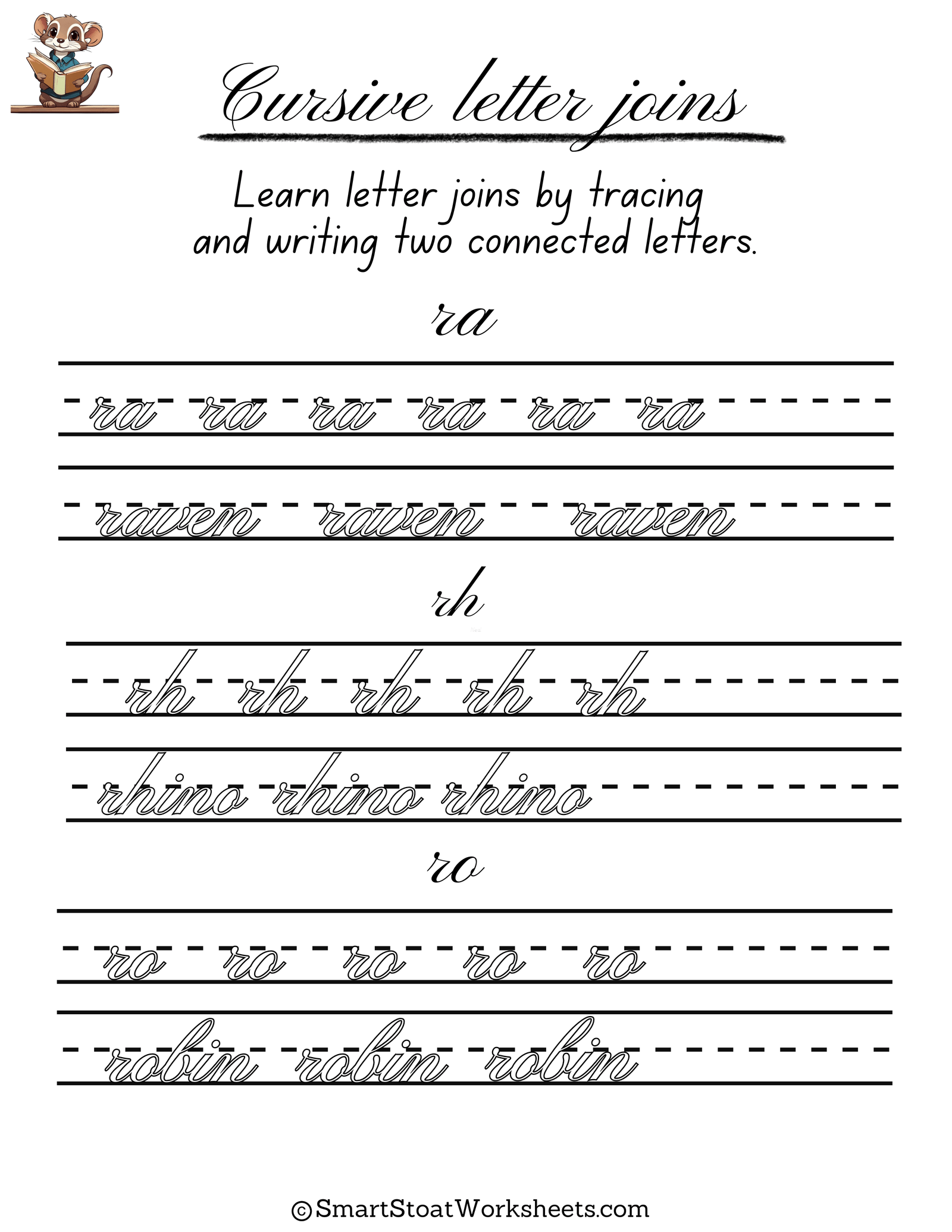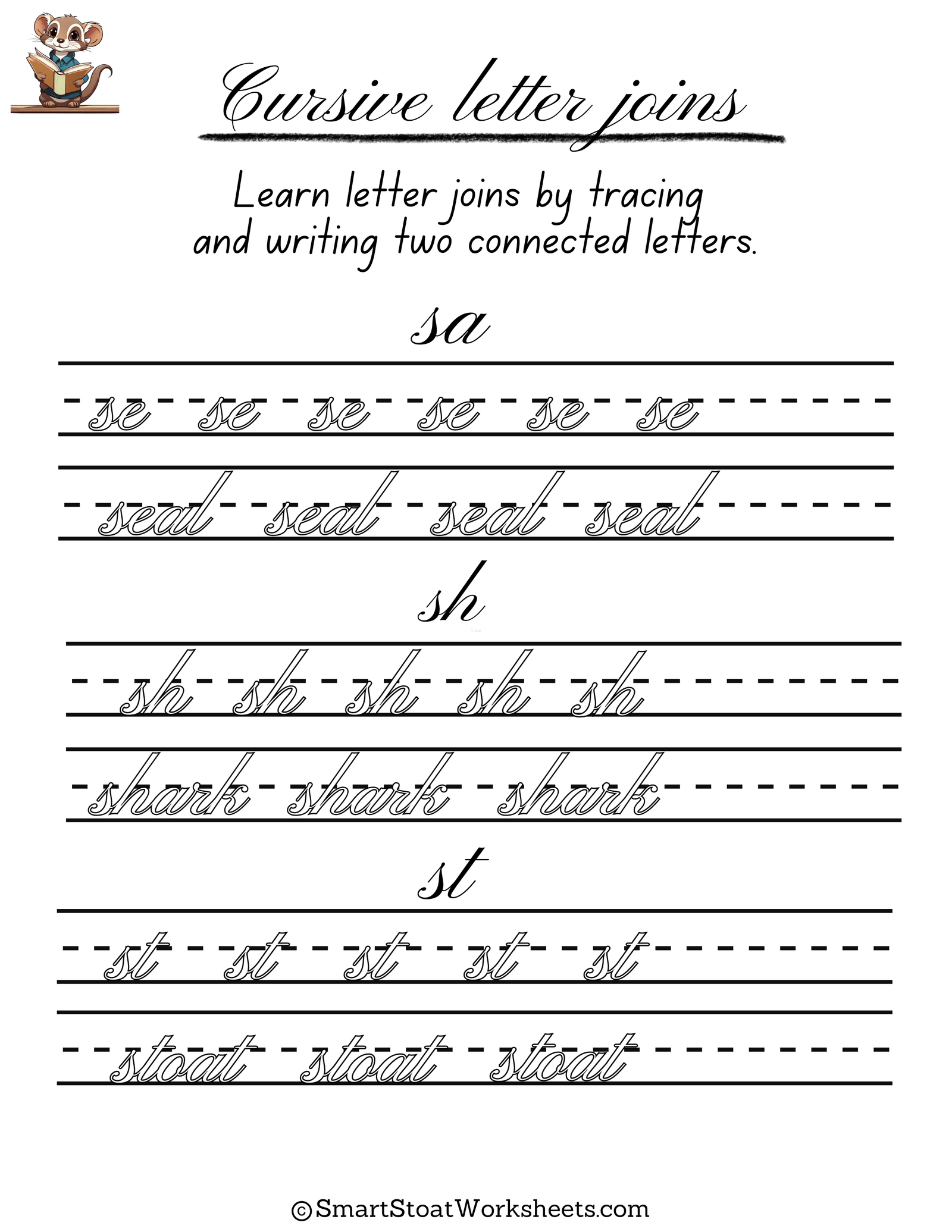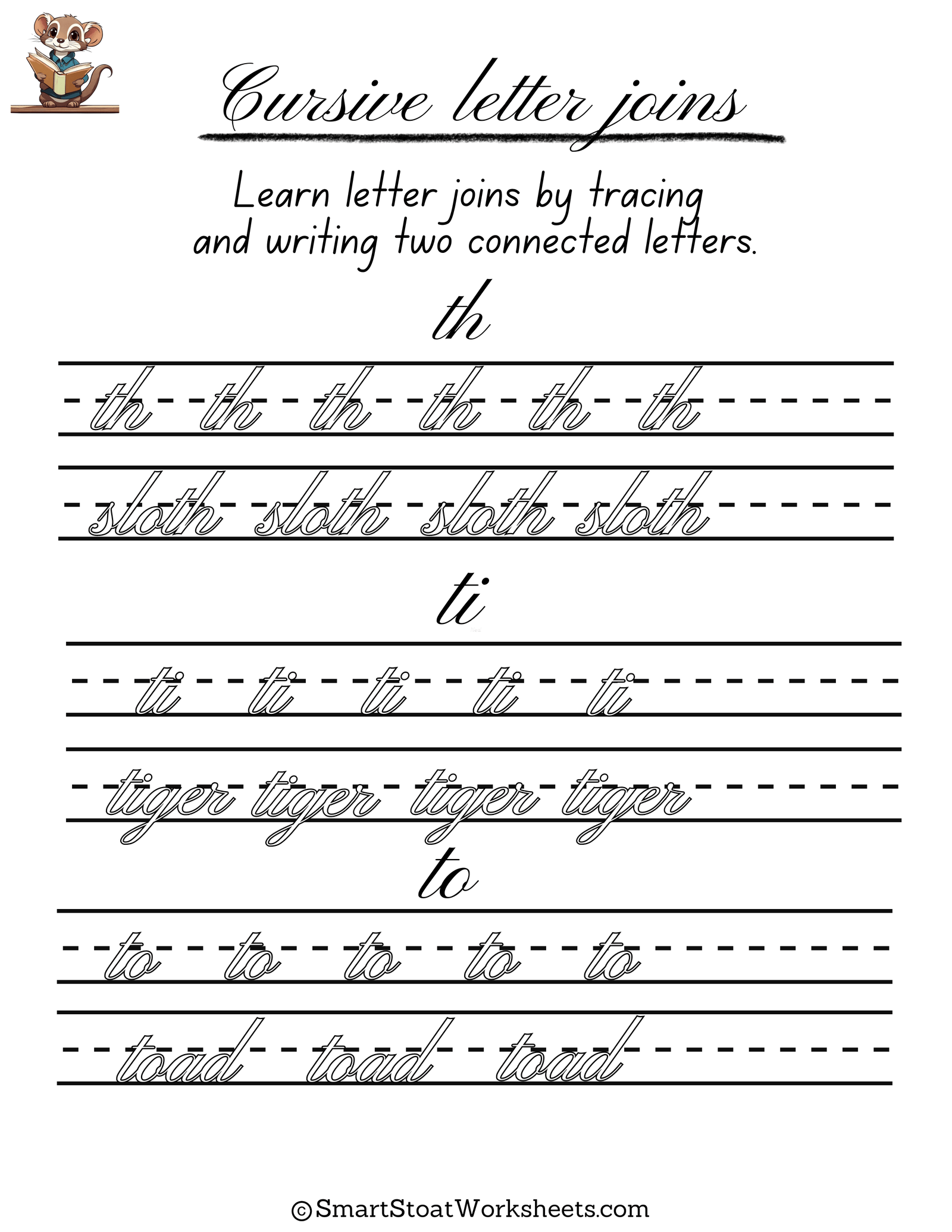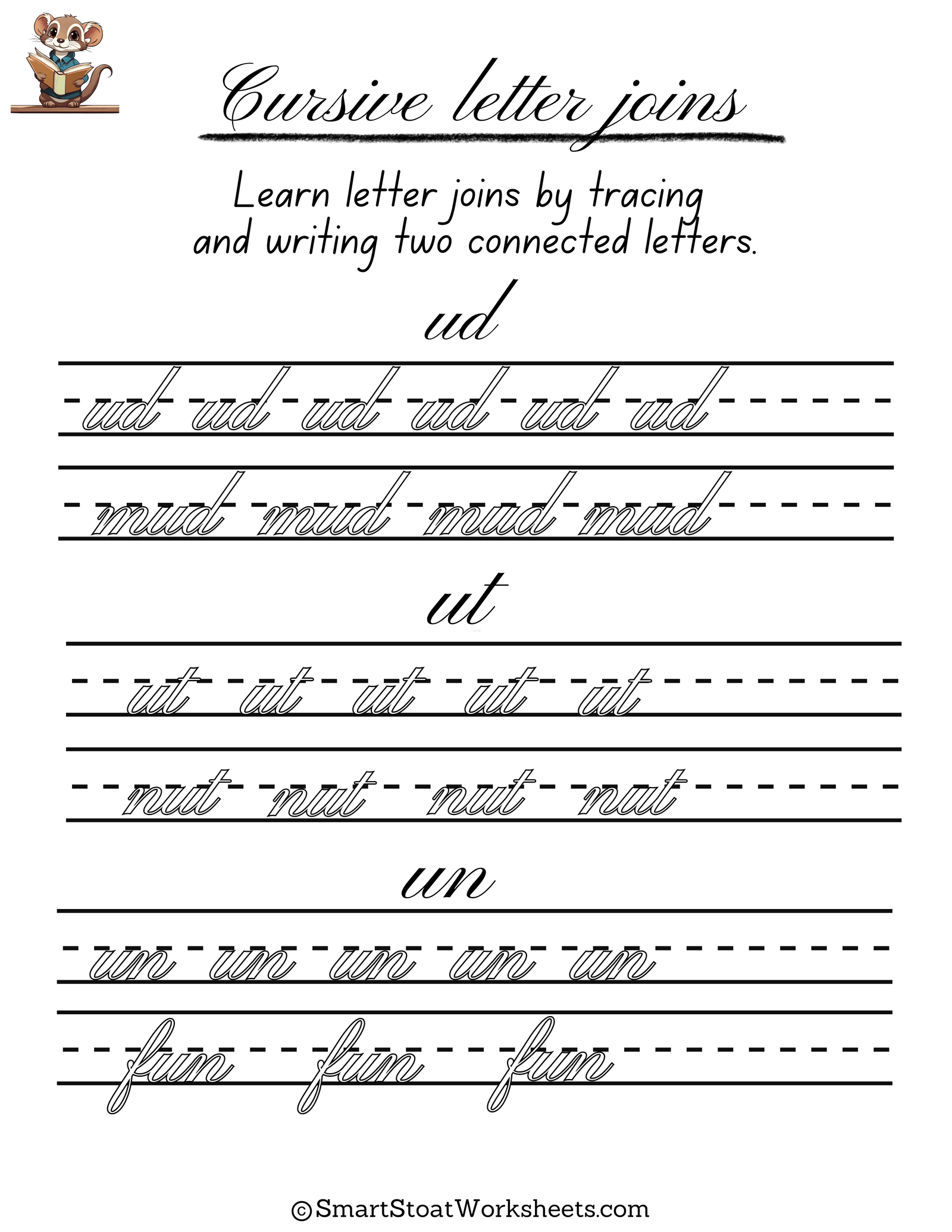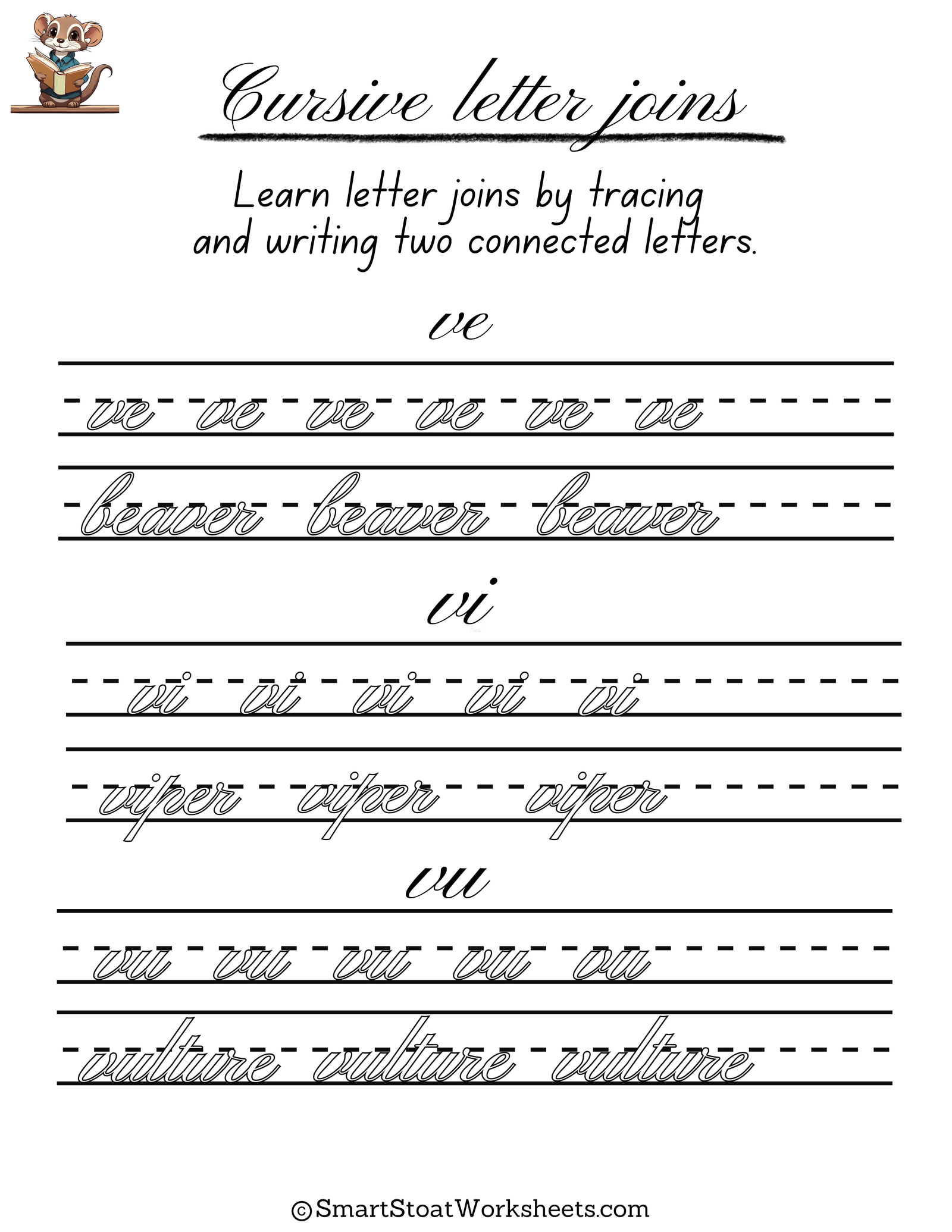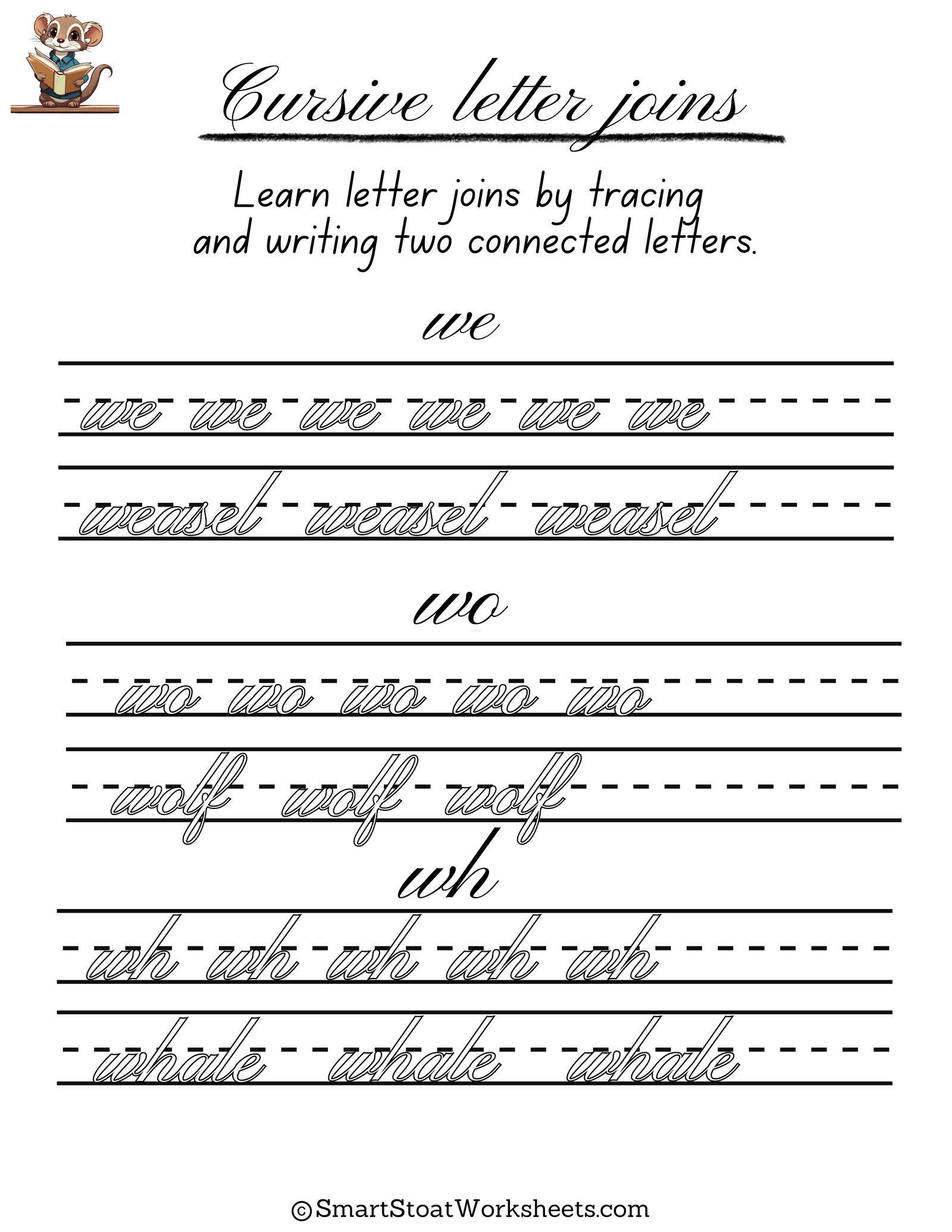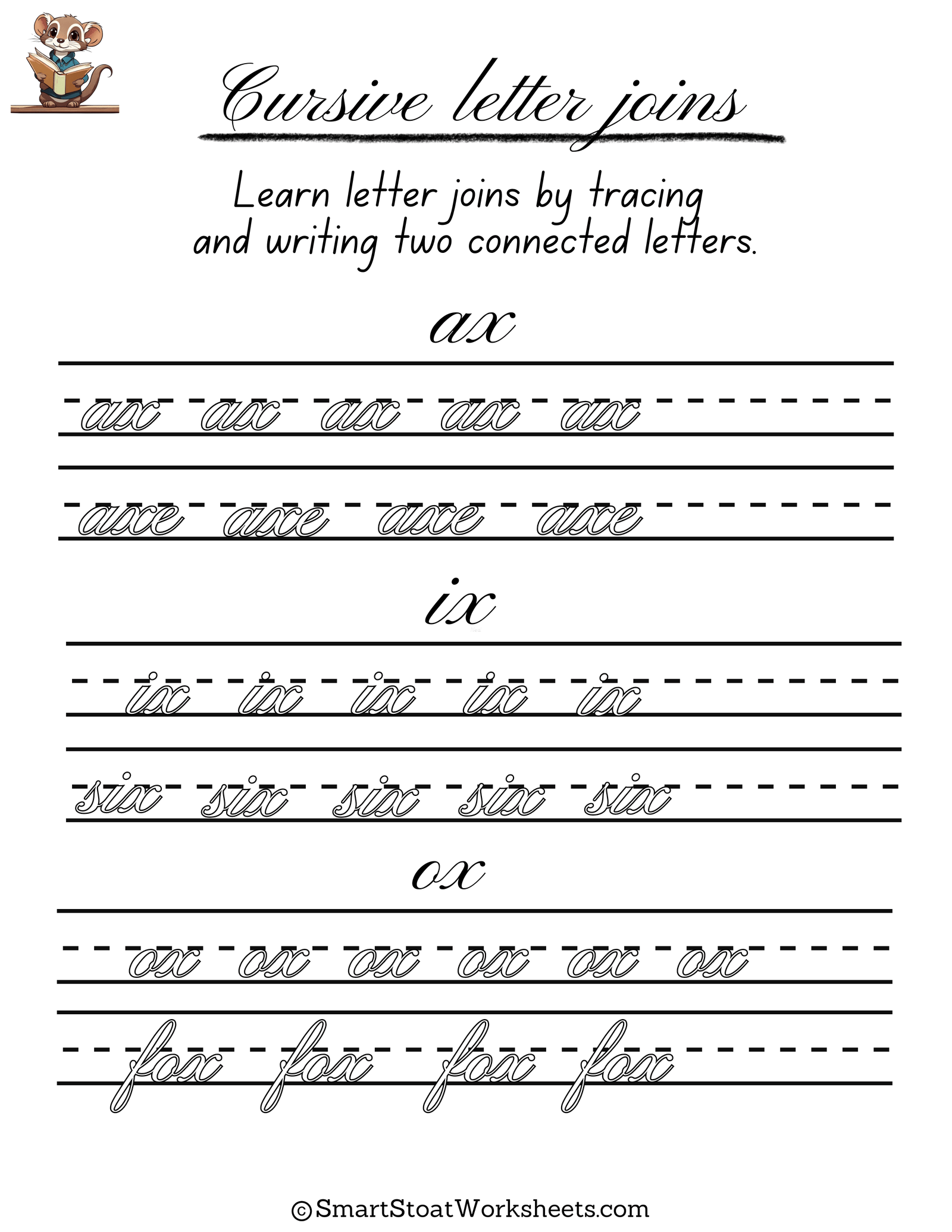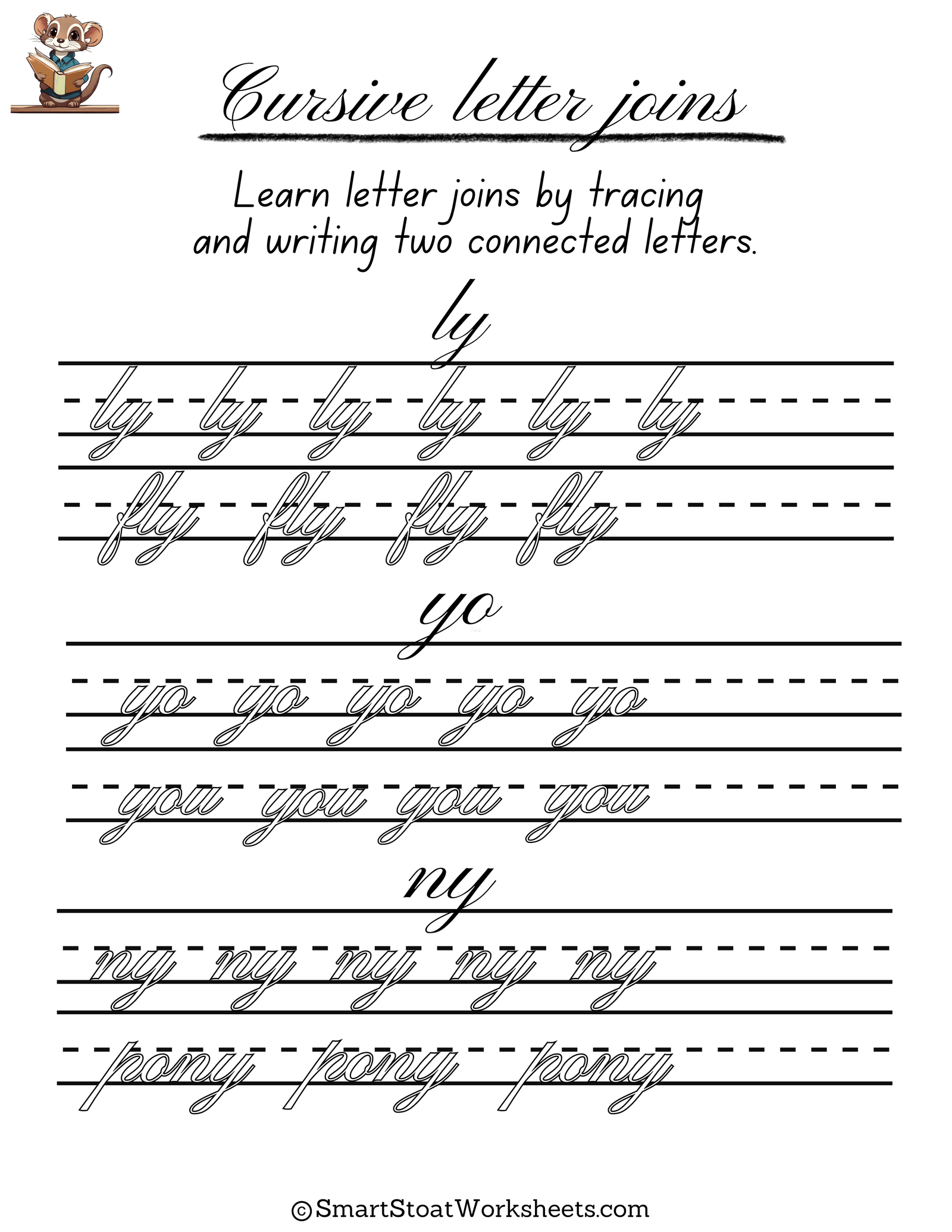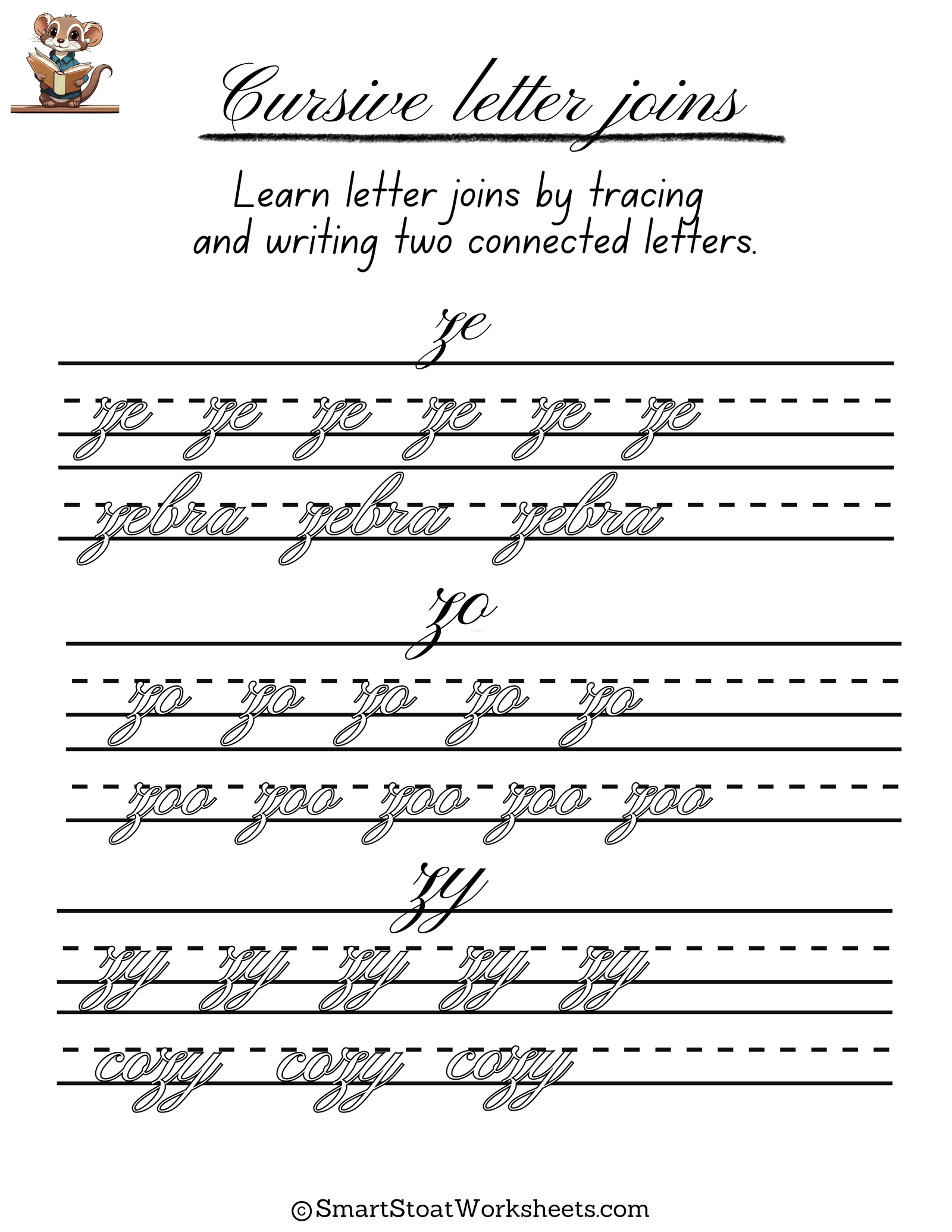Cursive writing, with its elegant loops and flowing strokes, has a timeless charm that transcends generations. However, mastering cursive letter connections can be a challenge for many, especially for kids who just started learning. Yet, the art of seamlessly joining letters together is not only a matter of aesthetics but also enhances writing speed and efficiency. On this page you’ll find free printable letter connection sheets that will help you learn cursive writing. We’ll start with the most important ones: ea, sh, ch, th, and ck, but you’ll find sheets for the whole alphabet below. Just click the pictures you want to download and a PDF opens.
Cursive writing, with its elegant loops and flowing strokes, has a timeless charm that transcends generations. However, mastering cursive letter connections can be a challenge for many, especially in the age of digital communication. Yet, the art of seamlessly joining letters together is not only a matter of aesthetics but also enhances writing speed and efficiency. In this article, we delve into the intricacies of cursive letter connections and provide tips to help you achieve fluidity and grace in your handwriting. Below you’ll find worksheets from a – z
Understanding the basics
Before diving into advanced techniques, it’s essential to grasp the fundamental principles of cursive writing. Cursive, derived from the Latin word “cursus” meaning “running,” is a style of penmanship where letters are joined together in a continuous flow. Unlike print handwriting, which involves lifting the pen between letters, cursive encourages smooth transitions from one letter to the next.
The Importance of Letter Connections: Cursive letter connections serve several purposes beyond mere aesthetics. Firstly, they facilitate faster writing by eliminating the need to lift the pen repeatedly. This fluid motion not only saves time but also enhances writing fluency. Additionally, connected cursive letters contribute to legibility by reducing gaps between characters, resulting in a more cohesive and visually pleasing script.
Tips for Improving Cursive Letter Connections:
Practice Basic Strokes: Start by mastering the basic strokes that form the foundation of cursive writing, such as loops, curves, and lines. These fundamental elements will serve as building blocks for connecting letters seamlessly.
Focus on Letter Pairs: Identify common letter pairs and practice connecting them in various combinations. For example, focus on joining “a” to “b,” “c” to “d,” and so on. By honing your skills with specific letter combinations, you’ll develop muscle memory and improve your overall fluidity.
Maintain Consistent Slant: Pay attention to the slant of your letters and ensure consistency throughout your writing. Consistent slant not only enhances the uniformity of your script but also facilitates smoother transitions between letters.
Practice with Repetition: Like any skill, mastering cursive letter connections requires consistent practice. Set aside dedicated time each day to practice writing exercises that focus on letter connections. Repetition is key to reinforcing muscle memory and improving proficiency.
Experiment with Pen Pressure: Adjusting pen pressure can greatly influence the appearance of cursive letter connections. Experiment with lighter and heavier pressure to achieve the desired effect. Lighter pressure is often conducive to smoother transitions, while heavier pressure can impart character and depth to your writing.
Use Guideline Sheets: Utilize guideline sheets with dotted lines to practice maintaining consistent letter height and spacing. Guideline sheets provide a visual reference for proper letter formation and help reinforce good writing habits.
Seek Feedback: Don’t hesitate to seek feedback from peers, teachers, or handwriting experts. Constructive criticism can provide valuable insights and help identify areas for improvement in your cursive writing technique.
